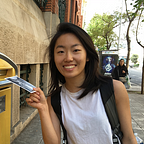Build city with a mosaic of subcultures
Content discovery ought to be more intentional
Everything will become commerce — from broadcasting to intercepting our search intent, capturing our content discovery journey, to becoming ubiquitous in our daily lives. Advertisers and products are competing in a crowded attention economy, seeking to be relevant and be perceived as value-add for viewers and users. Facebook’s ventures into payment, Pinterest’ mix of image search and commerce, Tik Tok’s reach via entertainment, and Alexa and Google’s fight over our home & voice space — all have a common objective in mind — to be the gateway of where users spend their time and to embed commerce in all contents we consume, be it text, image, video, voice, or message. In turns, all our online consumption turns into our digital footprints, captured and monetised in the name of better personalisation.
With an abundance of contents being shared everyday, technologies offering personalisation based on our expressed or implicit preferences aim to ease our cognitive load in navigating this sea of information and shorten the journey between our intent and reward. Better still, anticipate our needs before our own realisation. However, as Netflix’s recent docudrama ‘The Social Dilemma’ points out, the flip side of content personalisation combined with today’s predominantly ad-driven revenue model means that products are usually designed to incentivise engagement metrics such as frequency and duration of use at the expense of our wellbeing. This drives unhealthy habits that contribute to increased anxiety and foster a culture of passive consumption.
“Life imitates art far more than art imitates life” quoting Oscar Wilde — As our behaviours and preferences shape our personalised content feeds, so are our identities morphed by the media that we consume.
Instead of being a mirror reflecting ourselves back to us, our content discovery ought to be more intentional.
One of the key criticism with how technology companies are harvesting data and funnelling content is its opaque nature — a sense of lost control in determining what is put in front of us as we face mounting societal problems such as filter bubbles, polarisation, and disinformation generated online.
Eli Pariser outlined three dynamics of filter bubbles — 1) You are alone in it. shared information used to be the bedrock of shared experience — with our new personalised universe of content, we no longer share the same frame of reference with those around us. 2) The filter bubble is invisible. As opposed to self-selecting to viewpoints we tend to agree with, tech companies’ opaque algorithms is determining what we see, without providing any means to validate or change the assumptions that are made about us. 3) You don’t choose to enter the bubble — the contents are served tinted, without explicit decision to see only a subset of the whole.
If the gatekeepers of today’s internet are the people themselves, then we need platforms and products that facilitate this agency. How would we balance our individuality with collective experience? And how would we design platforms that embrace discovery that is also divergent and serendipitous?
“The metropolis must contain a large number of different subcultures, each one strongly articulated, with its own values sharply delineated, and sharply distinguished from the others. But though these subcultures must be sharp and distinct and separate, they must not be closed; they must be readily accessible to one another, so that a person can move easily from one to another, and can settle in the one which suits him best.” — Mosaic of Subcultures, A Pattern Language, C. Alexander
